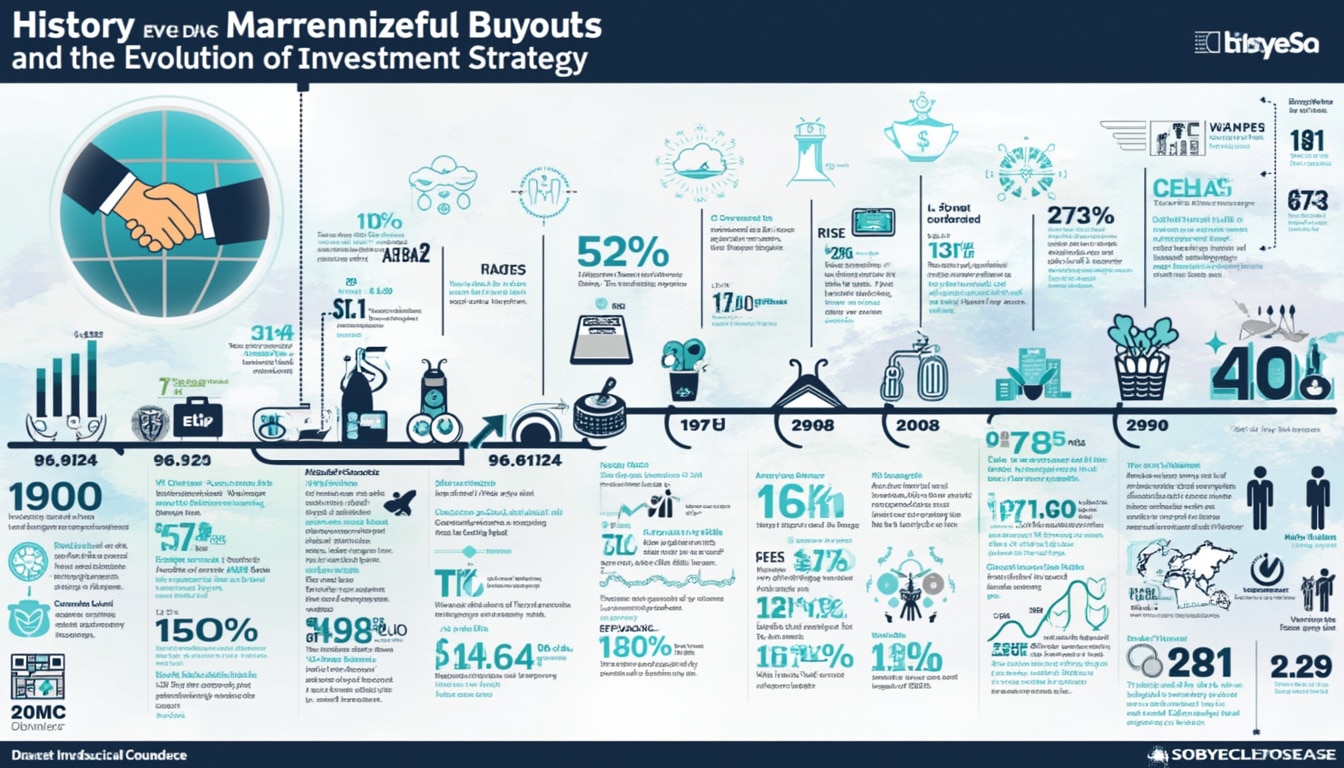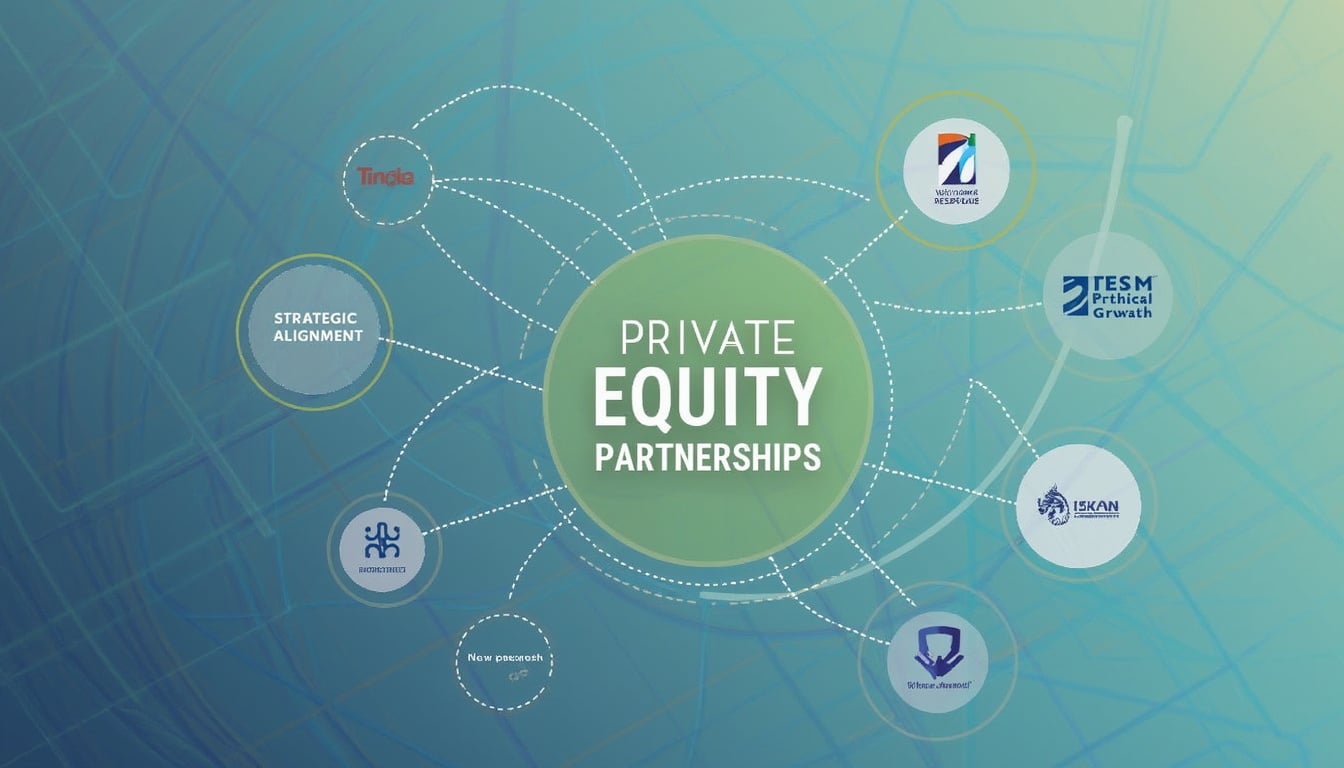The realm of buyouts is undergoing a seismic shift as a new model emerges, navigate through an intricate landscape of financial strategies and market dynamics. As private equity evolves, this article delves deep into the intricacies of these changing dynamics, exploring how emerging strategies redefine investment landscapes and operational norms.
Understanding the reemerging strategies in private equity buyouts is critical. This discourse will unpack the inherent complexities within current market dynamics. By analyzing the motivations driving investors and the structural nuances of these buyouts, readers will gain insights into future prospects and risks. As the landscape continuously shifts, it encourages a deeper contemplation of potential outcomes and historical precedents, emphasizing the need for adaptive strategies in a volatile market.
Restructuring the Framework of Buyouts
The landscape of buyouts is not just altering in content but fundamentally restructuring the framework within which these operations are conducted. With a focus on clarity and precision, a multitude of interplaying forces come into play, shaping the future of transactions in private equity.
This transformation is primarily fueled by the emergence of innovative financial instruments designed to accommodate an increasing diversity of investments. Moreover, they foster an environment conducive to the integration of technology into traditional practices. The landscape now includes a proliferation of hedge funds venturing into private equity investment strategies, thereby altering competitive dynamics significantly.
Sophisticated techniques now employed by investors have created more versatile models that can tackle a plethora of asset classes. Entrepreneurs seeking funding are faced with an array of options, from hybrid models that blend private equity with venture capital to direct lending approaches that enhance liquidity access. Furthermore, asset managers are adapting their approaches, fine-tuning their engagement strategies to attract partnerships that maximize synergies. This shift reveals a growing recognition that early-stage startups and established companies alike demand tailored financial profiles catering to their unique operational challenges.
Market Trends Shaping Buyout Strategies
The current market landscape is marked by various trends that are crucial in shaping new buyout strategies. One notable trend involves the rise of sector-specific funds targeting niche markets. These investments align investors with companies poised for growth and exhibit an adaptive capacity to maneuver through market fluctuations with relative ease.
The evolution of technology contributes heavily to this trend, whereby innovations in fields such as artificial intelligence and big data analytics empower investors to conduct rigorous analyses of potential acquisitions. By leveraging data-driven insights, acquisition strategies can be tailored based on meritocratic evaluations rather than subjective reasoning.
Sustainable investing is another significant trend influencing the landscape. Organizations are beginning to consider an entity’s environmental, social, and governance (ESG) factors as paramount during acquisition processes. This shift emphasizes the vital intersection between profit and purpose, illustrating an evolution in investment philosophy.
Complexities of Structuring a Buyout
Structuring a buyout in modern times represents a labyrinth of complexities. Gone are the simplistic methods of the past; today’s practices demand multidimensional frameworks that factor in financial engineering and operational strategies.
One of the primary complexities lies in assessing the value proposition of a target company. Investors must meticulously evaluate multiple aspects of the business, from financial performance metrics to cultural alignment. Beyond mere numbers, understanding the nuances of how a company operates and adapting to its internal dynamics presents challenges that investors can no longer overlook.
The introduction of various financing structures, including unitranche debt and second lien loans, adds layers to the strategic assessment process. These financing options come with different risk profiles and implications for ownership retention, which necessitate clear strategies for alignment with overall business objectives.
A New Era of Operational Efficiencies
The emergence of the new buyout model encompasses a pronounced focus on operational efficiencies. Investors are increasingly prioritizing operational enhancements that can generate higher returns post-acquisition. By working closely with portfolio companies through collaborative mechanisms, private equity firms can directly influence and support growth initiatives.
This collaboration extends beyond capital injection; it fosters a synergistic environment where both parties can innovate and experiment with new strategies that bolster resilience in the face of market challenges. As a result, a value-creation culture is cultivated, fostering lasting relationships that can withstand the test of time.
Balancing Risk and Opportunity
The dynamics of buyouts invariably involve a delicate balancing act between risk and opportunity. Acknowledging potential pitfalls while simultaneously embracing transformational prospects is paramount for success.
Investors engaging in buyouts must adopt a proactive approach that anticipates shifts in market conditions. This involves continual assessment and recalibration of investment strategies to align with evolving trends. By emphasizing agility, investors can identify and seize opportunities while remaining cognizant of potential vulnerabilities.
The drive for operational efficiencies can lead to unsettling risks if not managed prudently. Failure to effectively address integration challenges can result in attrition rates that potentially siphon off value. As such, investor relations must be meticulously crafted to minimize discord while maximizing collective goals and objectives.

Case Studies in New Buyout Models
Examining real-world examples of companies that have successfully implemented new buyout strategies offers valuable insights into effective practices and lessons learned.
Various case studies exemplify the success stories emerging from an adaptive investment strategy framework. An encouraging example includes an innovative tech startup that captivated the attention of private equity investors. By harnessing a talent pool rich in technical expertise, the company positioned itself favorably against competitors during the acquisition phase, ultimately yielding significant returns for stakeholders.
Successful Tech Buyout: Bridging the Innovation Gap
The acquisition of the technology startup by a renowned private equity firm illustrates the importance of aligning strategic interests effectively. The firm recognized the potential of the startup’s technology to disrupt existing market norms, thereby fostering a narrative that resonated with both investors and other stakeholders. Following the acquisition, concerted efforts were made to bolster operational efficiencies while preserving the integrity of the innovative team.
Continuous investment in technology and infrastructure allowed the startup to maintain momentum in the competitive landscape. This scenario underscores the synergy achieved through a shared vision between the investment firm and the acquired entity, exemplifying the potential for mutual value creation.
Market Risk and Resilience: The Story of a Distressed Buyout
In contrast, delving into the domain of distressed buyouts reveals the intricate strategies involved in turning failing firms into success stories. A recent engagement highlights how a private equity firm identified an undervalued manufacturing business facing operational woes. Through compelling negotiations, the firm secured a favorable acquisition price and adopted a strategic overhaul of the management team to instill a culture of accountability and performance.
This case accentuates the manifestation of resilience in the business landscape, illustrating that even in dire circumstances, adept investors can identify opportunities hidden within chaos. Such examples reinforce that the future of buyouts resides in the ability to extract value from overlooked or distressed assets, leveraging an adaptive mindset.

Strategic Partnerships and Collaborations
As new buyout models gain traction, the significance of partnerships cannot be understated. Collaborative entities navigate the complexities of acquisitions with heightened effectiveness, fostering dynamic approaches that enhance value across the board.
The importance of strategic alliances in enhancing deal negotiations encourages synergy between private equity firms and their portfolio companies. These collaborations prioritize mutual interests informed by shared objectives, resulting in fruitful partnerships that yield above-average returns.
Alliances in Technology Adoption
Incorporating technological advancements into buyout frameworks is another arena where partnerships are critical. Partnerships with tech-focused companies can serve as catalysts propelling value creation through data-driven decision-making.
Investors face minimal obstacles in demonstrating their commitment to enhancing value through effective collaborations. The emergence of dedicated technology partners that specialize in private equity investment bolsters operational efficiency, as these firms often provide tools that enable better asset management and evaluation.
Navigating Regulatory Factors
Additionally, strategic partnerships can aid in navigating complex regulatory challenges that often accompany acquisitions. Investors face stringent scrutiny from regulatory bodies; hence, aligning with experts versed in compliance reduces risk factors profoundly.
These partnerships fortify risk management structures, benefitting both investors and acquired entities, ensuring an effective transition throughout the buyout process.
Building a Robust Ecosystem for Growth
Ultimately, the emergence of new buyout models necessitates the creation of a robust ecosystem where innovation and collaboration thrive. This ecosystem not only embraces technology but also fosters relationships grounded in trust and shared values.
Investors initiating buyouts should view their engagements as long-term ventures, developing sustainable strategies that keep pace with technological evolution and leadership best practices. Such foresight empowers investors to compete effectively in a landscape characterized by rapid growth and change.

The Future of Buyouts in a Transformative World
The road ahead for buyouts is marked by significant transformations. As we enter uncharted territory, understanding potential trajectories becomes essential for stakeholders across the investment spectrum.
The advent of technology continues to influence investment workflows; artificial intelligence and automation emerge as key players driving higher efficiencies in asset management and acquisition processes. Private equity firms must be nimble to stay relevant and effectively leverage these advancements to retain a competitive edge.
Furthermore, the emergence of new risks linked to cybersecurity, regulatory changes, and market volatility might pose substantive challenges. Responding to these dynamic threats will necessitate vigilance and adaptability to ensure sustained growth.
Adapting to Market Dynamics
The capacity to adapt within turbulent market conditions will determine the success of private equity firms. Previously steadfast models may falter if they neglect the imperative for change. Firms need to cultivate an organizational culture that encourages innovation while ensuring agility remains at the forefront of operations.
Networking across various industries will further stimulate fresh insights into navigating future market challenges. The proactive pursuit of relationships with thought leaders and innovative partners will empower investors to identify and capitalize on emerging opportunities.
Embracing Sustainable Practices
In line with evolving investor sentiments, a greater emphasis on sustainability will shape the future of buyouts. Stakeholders increasingly demand transparency regarding the long-term impacts of their investments. This emphasis will not only enhance the public perception of private equity but also ensure alignment with broader societal imperatives.
Ultimately, the roadmap for future buyouts will necessitate a focused approach to building value that transcends financial metrics—fostering social responsibility through community engagement and ethical practices will cultivate a more inclusive investment landscape.

Conclusion on Emerging Trends in Buyouts
Emerging trends in buyouts paint a compelling picture of how private equity adapts to changing circumstances. Firms that adopt these emerging strategies are poised to thrive amidst evolving economic dynamics, ultimately positioning themselves for greater success. The resonance between innovation and resilience continues to shape the ever-changing narrative of the buyout industry.




Leave a Reply